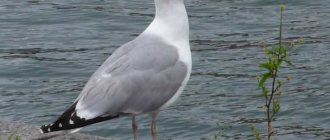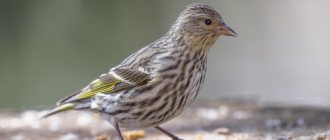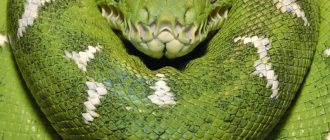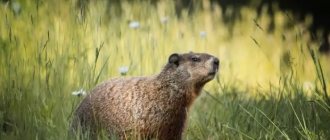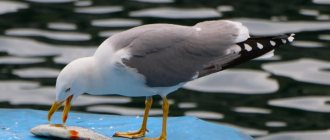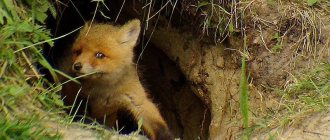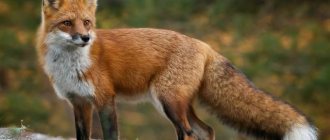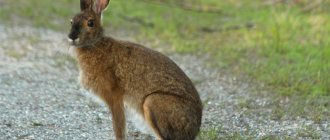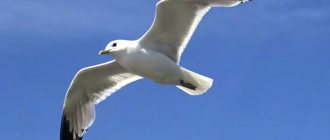The mention of seagulls is often associated with the sea, freedom, and serenity. These images are sung in poems, songs, and used in fiction. Therefore, it is especially noteworthy to get to know seagulls not as heroes of works, but as real birds. Gulls are classified as representatives of the order Charadriiformes. These birds have many varieties, but at the same time they are characterized by an equally capricious, energetic and eccentric character, because of which they can go to great lengths to obtain food.
general characteristics
The gull genus belongs to the gull family, which consists of several dozen species that differ in color, habitat, size and other parameters. The genus of gulls was first described in 1758 by the Swedish naturalist Carl Lineus. Archaeological finds indicate that members of the gull family appeared on Earth approximately 55 million years ago, which makes the gull genus relatively young.
The gull family is characterized by the ability for dynamic revolution. This species of bird is able to adapt to its surrounding habitat conditions in a fairly short time. Due to this adaptive mechanism, gulls have adapted to life near bodies of water. At first, they lived near inland bodies of water, not approaching large waters, but later the gulls gradually began to move to the development of marine territories. To do this, they began to develop a significant number of evolutionary adaptations that allowed them to conduct life activities both in water and near water.
It is quite difficult to classify and systematize all representatives of the gull family.
Recommended by topic
Blackbirds Woodpecker Heron
Ornithologists have still not reached a consensus on this matter and continue to create classifications based on their own systems. To a large extent, this process hinders the ability of birds belonging to different species to mate with each other. The result is offspring that have external characteristics of both genera.
Nevertheless, there are common features that characterize all representatives of this genus. These features include a long body, excellent aerodynamics, long wings, and a square tail. There are membranes on the feet that are intended for swimming. They help seagulls dive into the water for food or simply swim.
The characteristic colors for seagulls are white and gray plumage. There may be black markings in the area of the wings and head. Juveniles sometimes have brown feathers that lighten over time. The feathers are characterized by having waterproof properties, which allows the seagull to easily swim in the water.
The older the seagull, the lighter its feathers.
Seagulls have a rather strong and long beak with a curved end. The fish and other prey that gulls feed on are often quite slippery. The curved beak helps birds grab and hold it. The legs of seagulls are of medium length, black or red. Birds have no pronounced sexual dimorphism: there are practically no differences between males and females.
Poll: Have you ever fed seagulls?
Yes, I fed
100%
No, I didn’t feed you
0%
Voted: 1
Features of seagulls
If we consider the places where seagulls live, the only condition is the presence of water. This could be the sea or a freshwater body of water. But no matter where they live, they all have the same characteristics.
All seagulls have a streamlined body with short wings. The color of females is the same as the color of males. And old birds have a lighter shade (often white) than young ones. Seagulls have webbed feet.
Knowing the description of the seagull bird, one cannot conclude that it is a fairly formidable predator. But their powerful beak is capable of tearing flesh.
The size of seagulls also varies quite a bit. The largest, two kilogram, is the sea gull. It can have a wingspan of 1.7 m. At the same time, the small gull weighs 20 times less, only 100 g, and the wingspan does not reach 70 cm.And their fearless nature, combined with intelligence, allows them to adapt to any environment.
Seagulls form pairs for a long time and settle in colonies of several thousand birds. Most of these birds, being migratory, winter in countries with warm climates. Some may stay in cities during the winter if they have enough food.
Where do seagulls live?
Seagulls prefer to live on the coasts. Moreover, this rule applies to both seas and rivers with lakes. Some species of gulls are able to settle near swamps. In a word, their habitat is quite extensive, since these birds are found on different continents with different climatic zones.
There are gulls that are migratory species, but a significant part of the birds remain for the winter in their characteristic habitats.
Each species has its own habitat. For example, common gulls live in Russia, in a large part of Europe, in Central Asia, Iceland, etc. The climatic conditions for these birds are different, since common gulls are able to live in different climates: from subtropics and heat to cold.
There are species of seagulls that are able to settle near human habitation and thus connect their way of life with the characteristics of human life.
Seagulls are often characterized by a fighting nature, due to which they are not afraid of people and will often fly closer to them to ask for or steal food if a person is not watching closely.
Seagulls are found not only near bodies of water, but also at some distance. Thus, while searching for food, birds are able to fly up to agricultural areas and fly into cities located several tens of kilometers away from their usual habitat. At the same time, seagulls absolutely cannot be seen high in the mountains, in jungle or desert conditions.
Some species of gulls prefer fresh water bodies or rivers to sea salt water. Due to the fact that they often settle on the coast, they can cause significant trouble for people, as they steal food, scream loudly and attract attention. Seagulls are able to fly up to sea vessels, begging for food with loud cries.
Question to the expert
What is the lifespan of seagulls?
In the wild, the life expectancy of seagulls is about 10-20 years. This indicator depends on the species to which the seagull belongs. For some varieties it is more than 30 years.
Seagulls: description
Seagulls are part of the gull bird family. Their closest relatives are skimmers and terns. In total, there are approximately fifty species of seagulls that can be found in any corner of planet Earth. Such birds are widely distributed in coastal, marine and pelagic environments. However, despite the strong belief that gulls live near the sea, they are also often found in inland habitats. You can meet such birds in agricultural fields, in wetlands, and within the city and suburbs, far from bodies of water. However, they are practically never found in barren deserts, on steep mountain slopes and in impenetrable jungles.
Different types of seagulls can differ significantly in appearance from each other. There are many legends associated with the unusual colors of various animals, and seagulls are not left out. Particularly famous is a species of seagulls with an unusual pink plumage. A long time ago a legend appeared that these birds were once beautiful girls. But the evil, envious witch took revenge on these young maidens. She killed them by luring them into pink water. And when this happened, beautiful birds of an unusual pink color began to circle in the sky - these were the souls of young beauties. They still help sailors in trouble to this day.
Appearance
Externally, seagulls, depending on the species, can differ significantly from each other. However, all species have something in common. For example, their elongated body has a streamlined aerodynamic shape. Their tail is almost square, and their wingspan is very long. It is impossible to distinguish a female from a male by appearance alone. Young birds have a brownish-white color, but with age it changes to pure white. The weight of a seagull directly depends on the species and can vary from 0.15 to 2 kg. Moreover, their size is also quite varied - 0.3–0.8 m.
Their legs are of average length, and they can be painted black or red. The powerful beak has a hooked shape, this allows the gulls not to miss sea prey, which is sometimes very slippery. The size of such animals depends on the species: they can be both large and small. Some species have webbed feet. As a rule, those species that live on the sea coast have membranes, but they are absent in ocean birds.
Such an animal is painted in contrasting colors: basically all the plumage is white, but there are dark markings on the ends of the wings and on the head. Some species have a completely white body, but they have dark-colored camouflage stripes on their backs. Birds do not drown in water and easily swim on its surface, this is possible due to the waterproofness of their plumage.
Lifestyle and character
All species of gulls, without exception, are colonial birds. The number of one colony can be several thousand individuals, both adults and young. Are these birds sedentary or migratory? There is no single answer to this question. Most seagulls fly to regions with warmer and milder climates for the winter. However, some birds remain within the city limits, but only if they can find enough food on the streets. The seagull differs from most other birds in that it not only flies very well, but also moves quickly on the ground. Such birds are monogamous animals, which means that they create strong pairs.
The lifestyle of such animals is diurnal. Throughout almost the entire day they look for food. Such birds eat a lot and often, in order to get food for themselves, they have to show miracles of their intelligence. For example, to get a mollusk out of its durable shell, a seagull takes it in its beak and flies up to a decent height, and then throws it on the rocks. As a result, the shell cracks and the mollusk ends up in the bird's stomach.
You can often see such animals in search of food on city streets. People don’t scare them at all, but on the contrary, they try to beg them for a piece of bread or a fish. Seagulls are distinguished by their amazing ability to quickly adapt to any environment. With the first rays of the sun, these animals already set off in search of food; they tirelessly circle over bodies of water and only with the onset of darkness return to the safe place they are looking for in advance. For overnight stays, they choose places that are well protected from strong gusts of wind and are inaccessible to predatory animals.
How long do seagulls live?
Under natural conditions, the average lifespan of seagulls is 15–20 years.
Kinds
About 60 species of birds belonging to the gull family live on Earth. Among the most common species found in Russia, the following representatives of this family can be distinguished.
black-headed gull
Representatives of this species are considered the most common among seagulls. They have a brown head with a distinctive white nape. Rivers and lakes become favorite habitats for birds, which is why they got their name. The size of the bird is about 40 cm, while the weight is in the region of 250-350 grams.
Little gull
These are one of the smallest representatives of the family, which is reflected in their name. Their size is only 30 cm in length, while their weight is usually no more than 100 grams. Small gulls prefer to live in swamps, rivers and lakes. The appearance is characterized by completely black plumage on the head.
Mediterranean gull
The appearance of representatives of this species is distinguished by the presence of yellow legs, beak and iris. At the same time, the plumage color of Mediterranean gulls is completely white in the head area. The skin near the eyes is red. The size of such gulls can be about 60 cm. They choose coastal areas to live.
Relict gull
Representatives of this species have a conservation status of critically endangered. Externally, they are characterized by the presence of black plumage on the head and neck. In winter, the head turns white. There are black feathers located along the edges of the wings. The wings are characterized by the presence of a light gray color, while the tail and chest area are white. There are white spots near the eyes. The size of relict gulls is about 45 cm.
Black-headed Laughing Gull
These are quite large representatives of gulls, since their length can reach 70 cm and weigh 2 kg. The appearance of seagulls is characterized by the presence of black on the head and gray on the back. The wings and body are white. The beak of seagulls is orange with a black mark at the tip. Young individuals under three years of age are more reminiscent of herring gulls in appearance.
sea pigeon
These are medium-sized gulls, which is about 50 cm. They have a white head, while the wings and back are gray. There are black feathers located on the wings and tail. The gull's legs are red. Birds are characterized by the presence of an elegant and fairly thin beak.
Herring gull
Another rather large representative of seagulls, whose size is 60 cm and weighs 1.5 kg. Its color is characterized by the presence of light shades: the area of the head and body is white, the wings are gray, with black feathers at the tips. The beak has a curved shape towards the end. The iris of the eyes of birds is silver or light yellow. Herring gulls have one of the most quarrelsome and aggressive characters among the entire family of gulls.
Broody
This species of seagull is distinguished by its relatively large size: it reaches a length of about 55 cm and weighs 800 grams. The body and head of the bird are white. The wings are dark gray, sometimes reminiscent of black. The beak has a bend at the bottom. The iris is characterized by a light yellow color.
Steppe Gull
Another of the largest representatives of seagulls. The steppe gull can reach a size of 65 cm and weigh 1.3 kg. These birds are characterized by having a long neck and graceful, fluid movements. Their color is predominantly white, covering the head and body area. The wings are gray. The color of the beak and legs is yellow.
sea gull
Sea gulls are considered the largest representatives of this family. Their size reaches 75 cm. The feathers on the body are all white, with the exception of the upper part, in which they are characterized by the presence of a dark color. The beak also has a curved shape and is characterized by the presence of a yellow color. In this case, there is a red spot located below. The paws are a soft pink shade.
Final table of seagull species according to user ratings
Gigantic hummingbird
1
sea gull
0
general information
The seagull is a symbol of independence and freedom; it is associated with the sea; these birds are sung in music, poetry and various stories. Ornithologists attributed them to the family of the same name - gulls. Some of these birds are listed in the Red Book.
The seagull looks like a medium-sized bird with smooth and dense plumage, which can be gray or white, often complemented by black areas on the wings and head.
Description of the seagull:
- weighs up to 2.7 kg;
- body length - up to 80 cm;
- flight speed - up to 120 km/h;
- wingspan - up to 190 cm.
These are migratory birds. If we consider where seagulls winter, these birds mainly prefer the Caspian or Black Sea, some fly to the Mediterranean or Northern coast, to China, Japan or Africa. Seagulls feed on fish, crustaceans, small birds; they find everything suitable for food in landfills. Also, with the onset of winter, they can be seen in large cities. These birds are not afraid of either adults or children, and often beg for bread.
In Russian, the word “seagull” arose at the end of the 17th century. The ancient form of “tea” can be found in chronicles, for example, in “The Tale of Igor’s Campaign.” It is not known exactly why this bird is called this way, etymologists believe that this is due to its cry, which has been interpreted as “kyay”. Due to the alternation of k/h “kyayka” it turned into “seagull”.
All types of gulls prefer to lead a colonial lifestyle. Colonies can reach more than a thousand individuals.
What do seagulls eat?
The diet of birds is very diverse, as they are capable of eating any food. Seagulls can eat and digest everything that tourists leave behind, for example, bread or sausage. However, the basis of the birds' diet for the most part consists of prey, which they seek through hunting. So, seagulls are able to hunt:
- Crabs.
- Fish.
- Insects.
- Rodents.
- Shellfish.
During the hunt, seagulls are able to circle above the water, waiting for prey. Sometimes circumstances are such that seagulls have to circle in one place for several hours without any result. This is not a problem for strong and hardy birds: despite their sharp nature, they can concentrate on hunting for a long time.
After discovering prey, the gulls quickly dive into the water and try to catch it with their curved beaks.
Sometimes a different approach is used for hunting. If birds spot a large fish that is hunting, they can use it to find smaller fish and then try to take someone else's catch. Even if this does not work out right away, the seagull will try to intercept a piece of the prey when a large fish is tearing the victim apart. Often, birds, in an attempt to intercept the desired piece in this way, begin to circle not far from the sharks.
If the prey disappears, the seagulls need to scurry off to hunt. They are characterized by the presence of a large reserve of strength, thanks to which they are able to make several strong dives in a short time.
The easiest way for seagulls to hunt is crabs and jellyfish. The former are characterized by low speed, which will not allow them to escape, and the latter by its absence altogether, since jellyfish cannot resist the attacks of seagulls while on the shore. This determines the desire of birds to hunt living creatures that are located directly on the shore.
Moreover, regardless of their abilities and dexterity, hunting is always quite difficult.
This determines the desire of seagulls to steal and beg food from people.
Seagulls do not even disdain carrion. They can safely eat leftover food that they find in garbage dumps, regardless of the fact that they may have already begun to decompose.
If there is no suitable prey in the sea, seagulls go to catch rodents and amphibians. Birds are also engaged in destroying other people's nests and eating eggs.
Elena
Ask a Question
Question to the expert
Do seagulls need fresh water?
Seagulls are able to drink both fresh and salt water. Due to this ability, they can spend several days at sea without returning to land. However, given a choice, gulls will prefer fresh water due to the fact that processing salt is a process that requires a lot of energy.
Hunting and feeding seagull birds
The diet of the gray gull is very varied and can vary depending on the situation. Birds inhabiting coastal areas hunt fish. In search of prey, a seagull swims on the surface, lowering its head under the water.
Less often, birds search for prey by circling over the water. If the caught animal has a protective shell, the seagull lifts it high into the air and drops it down.
Gulls also explore the territories of fish processing plants and the water surface around fishing vessels in search of waste.
In addition, the bird obtains food on land, eating insects, rodents, eggs of other birds, as well as plant foods.
Features of character and lifestyle
Recommended by topic
Hippopotamus (hippopotamus) Hyenas Hamster
Seagulls are most active during the daytime. For the most part, they are engaged in trying to find food for themselves. Since seagulls are quite voracious birds, this task becomes of paramount importance for them. In an attempt to find food, they can fly a considerable distance from their habitat, but in the evening they return to the nest to spend the night. In this way, seagulls take shelter from the wind and escape from adverse weather conditions. In addition, a large flock can scare away natural enemies that the birds could not cope with alone.
Seagulls are distinguished by their originality and great ingenuity, which manifests itself in different circumstances. So, for example, if a bird is not able to open a found shell with its beak, it can throw it from a height onto the stones so that the shell cracks from the fall.
Sometimes birds are found in cities, where they settle near artificial reservoirs. There, seagulls can obtain a significant amount of food by begging for it from people. Birds can organize such feeding either independently or through a flock. If a bird decides to eat alone, this can lead to conflict between relatives.
Gulls live in one territory in colonies, the number of which varies from 500 to 5000.
The nests of all neighbors are nearby - at a distance of no more than ten meters. Although living in this format allows the flock to protect itself from predators and has various advantages, it also has some disadvantages. For example, seagulls do not get along well with each other and often provoke conflicts among themselves, which arise due to food or due to intrusion into someone else's territory.
Seagulls are capable of stealing food from their neighbors if they are not watching. When this fact is discovered, a collision occurs between the birds through a fight using a beak and sharp claws.
The lifestyle of seagulls largely depends on the current weather conditions. This is due to the fact that climatic conditions determine how much food the seagulls can get. If conditions are poor, seagulls may not lay eggs at all. At the same time, they will sit in the nests as if they were actually incubating them. If climatic conditions do not provide for stable nutrition, seagulls are capable of completely changing their place of residence, moving the entire flock to another territory.
Some species of gulls, such as black-headed gulls, can take prey from birds that are smaller than them. Seagulls swoop down on other birds and attack them with their beaks, forcing them to let go of their prey in order to defend themselves. After the food has fallen, black-headed gulls drive away the small bird and appropriate the results of its labors for themselves.
Each gull has its own small area within the vast territory occupied by the bird colony.
The bird protects this piece of land from relatives and other competitors. If a stranger enters this territory, a fight will immediately begin. In the event of an invasion by other predators or people, the colony comes to the rescue, raises a cry, flies into the sky and tries to drive out the uninvited guest by firing droppings.
Some features
Various species of gulls can be found all over the globe, wherever conditions are suitable for these birds. But one part of them prefers only temperate climates, the other prefers tropical latitudes.
Certain species can only be found along the shores of oceans and seas. Most often they lead a sedentary lifestyle. The remaining species choose rivers and swamps, and also inhabit oases in deserts. These bird species usually emigrate in winter, preferring to be in the warm sea corners of the planet.
Seagulls are excellent flyers. This is due to the structural features of the body. These birds feel at home in the air. They can fly without fatigue for quite a long time and move long distances.
Seagulls are also distinguished by their unique tricks during flight. Feet with membranes at the ends allow birds to swim well. Birds move quickly both on the water surface and on land. Seagulls, like almost all species of waterfowl, form colonies. Their flocks can number several thousand or only a dozen individuals.
If there is not enough food, then these birds often take the form of impudent and greedy predators who are able to fight for a piece of food with amazing aggressiveness both with their adult relatives and with fledgling chicks.
But when danger appears, these birds immediately unite and together begin to fight a common enemy, which may be:
- polar bear;
- fox;
- crows;
- wolf;
- arctic fox;
- marten;
- steppe eagle;
- a person threatening their life.
To alert when enemies attack and protect themselves, these birds have developed an excellent and well-functioning system of vocal sounds.
Breeding seagulls
With the onset of mating season, seagulls begin to search for a partner. They are characterized by monogamy, and therefore the formation of a pair occurs once and for all. The breeding season begins in April for areas characterized by a warm climate. For colder areas, the breeding season is May or even early summer.
At this moment, migratory birds manage to return from wintering, put their housing in order, dividing the territory for subsequent nesting.
During this period, clashes between males intensify as they try to win the best piece of land for themselves. After the entire territory has been divided, the males begin to search for females. This happens through the organization of a feeding ritual. If the female accepts food as a gift, this expresses her consent to form a pair. Subsequently, the male calls her to his territory, where they begin to build a nest.
To build a nest, seagulls use branches, algae, and moss. Sometimes material is stolen from people, which leads to the discovery of various threads, beads, pieces of clothing, etc. in the nests of seagulls. Seagulls are often called orderlies for their ability to take garbage with them.
The nest is formed round and large, having a depression in the middle. It is placed on rocks or left near the coast. Females lay 2-3 eggs at a time, which they and their partner hatch in turns. The process of development of the offspring occurs in approximately 30 days. After this, the chicks hatch, which are distinguished by their loudness and great gluttony. They gain independence a week after birth, when they learn to stand firmly on their feet and move around. However, their parents still bring them food.
Despite the fact that both parents are involved in feeding the offspring, feeding the chicks is often quite difficult, since they need more and more food every day.
Feeding is carried out at least 5 times daily and consists of offerings in the form of small prey. The parents themselves do not always have time to eat, which also affects their condition. The chicks begin to fly when they reach one month of age. In this case, complete mastery of flight occurs closer to two months of age.
Sexual maturity occurs in the second year of life, but in some varieties it occurs at the age of 8-10 months.
Reproduction
The peculiarity of seagulls is monogamy. Partners who create families are faithful to each other. The female gives birth once a year. The “head of the family” takes care of its food during the nesting period, which falls on April-July (depending on the region). In many gull species, partners take turns incubating their young.
A clutch can contain from 1 to 3 motley eggs, from which chicks hatch after 3-4 weeks. Babies covered with fluff are already sighted and well developed, but for the first week they cannot move independently. Young gulls reach sexual maturity by the 3rd year of life. The average duration of their existence is 15-20 years.
Natural enemies of seagulls
A significant portion of seagulls are characterized by their large size, ability to move quickly, and developed sense organs. All this gives them natural advantages over enemies, which seagulls practically do not have in the wild. For small species of gulls, birds of prey such as eagles and kites can pose a threat.
Seagulls inflict most of the damage on themselves, suffering from the actions of their relatives. This is influenced by their aggressive and harsh nature, because of which they often quarrel, attacking not only each other, but also the nests of their neighbors. This usually occurs at a time when the colony has very little opportunity to find food, causing the gulls to begin to starve.
People also often exterminate bird colonies: in some areas they are considered harmful birds that destroy valuable species of fish. However, this often does not correspond to reality, since horses almost always hunt small fish that do not have significant value for fishing.
The Legend of the Seagulls
There are many beliefs and legends about birds in people's lives. For example, the swan princess. The pink gull is the most famous from this angle.
According to legend, these are beauties punished by a witch for their attractiveness. They were drowned in rose-colored water. Their souls were reborn into pink seagulls and appeared in the sky. Now they help lost travelers.
